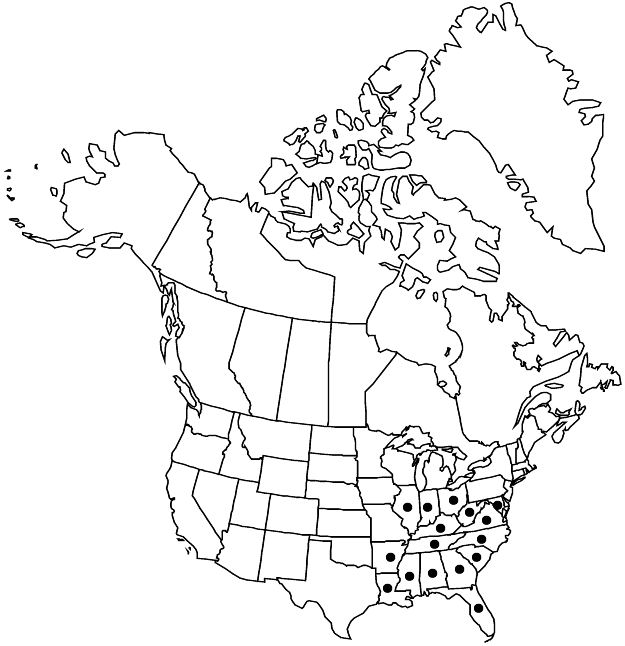Hypericum virgatum
in J. Lamarck et al., Encycl. 4: 158. 1796.
Herbs perennial, erect, unbranched or branching at base and in inflorescence, 4–7.5(–10) dm. Stems: internodes 4-lined. Leaves (main stem) ascending to spreading, sessile; blade lanceolate to oblong-elliptic or obovate, 10–30(–50) × 3–8(–12) mm, on main stem, longer than internodes, leathery, margins plane, apex usually acute to acuminate, rarely obtuse, basal veins 1–3+, midrib with 2–3 pairs of inconspicuous branches. Inflorescences broadly cylindric to corymbiform, 25–70-flowered, branching mostly dichasial, subsidiary branches with or without relatively smaller leaves. Flowers 8–13 mm diam.; sepals narrowly ovate to lanceolate, equal, 3–3.5 × 1.5–2.5 mm, margins sometimes ciliate, not setulose-ciliate, apex acute to acuminate; petals orange-yellow, obovate, 6–10 mm; stamens 50–80, irregularly grouped; styles 2–4 mm; stigmas capitate. Capsules ovoid to rostrate-subglobose, 3–5 × 2–3 mm. Seeds (0.5–)0.6–0.8(–0.9) mm; testa reticulate. 2n = 24.
Phenology: Flowering mid–late summer (Jun–Sep).
Habitat: Dry roadsides, fields, open woods
Elevation: 0–700 m
Distribution

Ala., Ark., Fla., Ga., Ill., Ind., Ky., La., Md., Miss., N.C., Ohio, S.C., Tenn., Va., W.Va.
Discussion
Selected References
None.